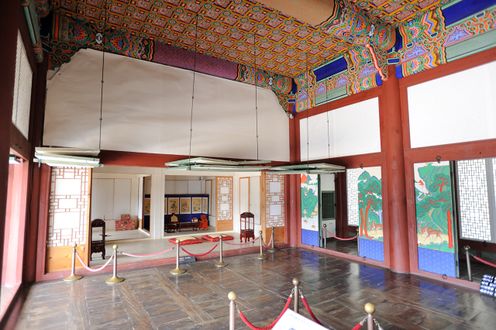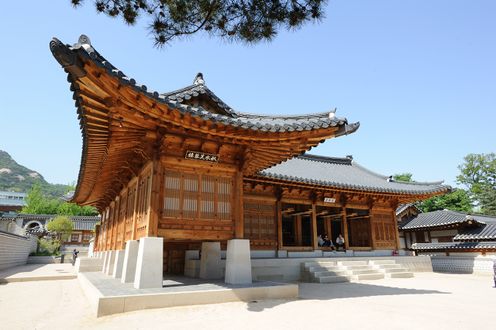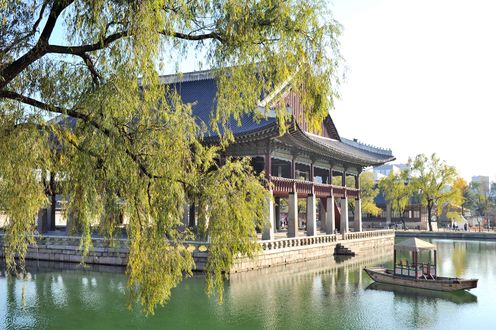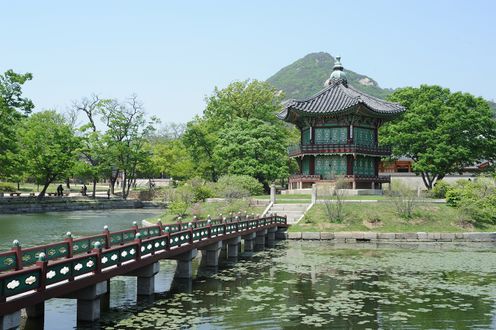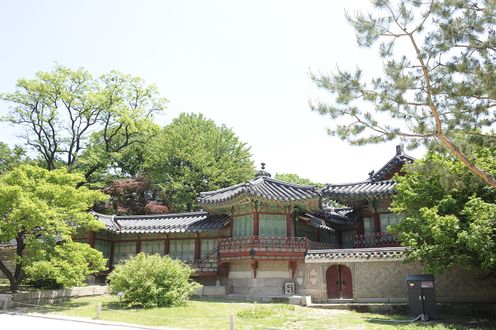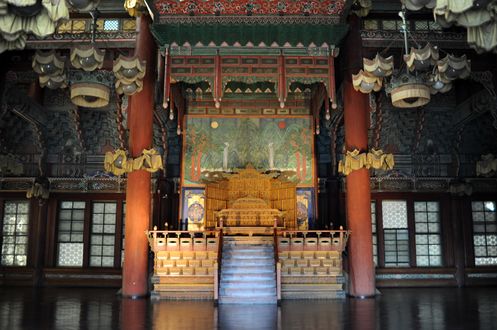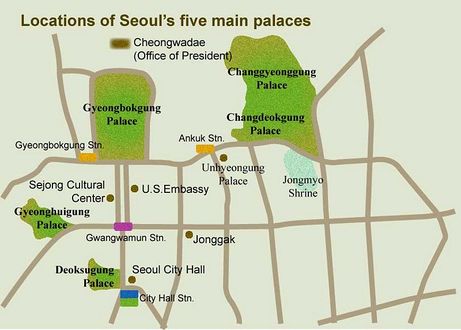"Understanding the Design and Function of Joseon's Royal Palaces"의 두 판 사이의 차이
잔글 (Lyndsey님이 Palaces 문서를 넘겨주기를 만들지 않고 Understanding the Design and Function of Joseon's Royal Palaces 문서로 이동했습니다) |
|||
| 11번째 줄: | 11번째 줄: | ||
During the Japanese colonial period, over 95 percent of palace buildings were destroyed. Due to this tremendous loss of Korea’s royal architecture, it is impossible to experience the scale of the palaces as they once were. | During the Japanese colonial period, over 95 percent of palace buildings were destroyed. Due to this tremendous loss of Korea’s royal architecture, it is impossible to experience the scale of the palaces as they once were. | ||
| − | <gallery mode=packed heights=220px> | + | <gallery mode=packed heights=220px><gallery mode=packed heights=220px> |
| + | 파일:3-18.경복궁 강녕전 내부-DSC_6607.jpg|Inside Gangnyeongjeon of Gyeongbokgung Palace (Sajik-ro Jongno-gu, Seoul) | ||
| + | 파일:3-18.경복궁 건청궁 장안당-DSC_6799.jpg|Jangandang Hall in Geoncheonggung Palace inside Gyeongbokgung Palace (Sajik-ro Jongno-gu, Seoul) | ||
| + | 파일:3-18.경복궁 경회루-DSC_3124.jpg|Gyeonghoiru Pavilion of Gyeongbokgung Palace (Sajik-ro Jongno-gu, Seoul) | ||
| + | 파일:3-18.경복궁 광화문-DSC_2897.jpg|Gwanghwamun Gate of Gyeongbokgung Palace (Sajik-ro Jongno-gu, Seoul) | ||
| + | 파일:3-18.경복궁 근정전 내부-DSC_3030.jpg|Inside of Geungjeongjeon Hall of Gyeongbokgung | ||
| + | Palace (Sajik-ro Jongno-gu, Seoul) | ||
| + | 파일:3-18.경복궁 향원정-DSC_6643.jpg|Hyangwonjeon Pavilion of Gyeongbokgung Palace (Sajik-ro Jongno-gu, Seoul) | ||
| + | 파일:3-18.창덕궁 금천교-DSC_2112.jpg|Geumcheongyo Bridge of Changdeokgung Palace (Yulgok-ro, Jongno-gu, Seoul) | ||
| + | 파일:3-18.창덕궁 돈화문 뒤-DSC_2096.jpg|Inside of Donhwamun Gate of Changdeokgung Palace (Yulgok-ro, Jongno-gu, Seoul) | ||
| + | 파일:3-18.창덕궁 삼삼와-_FSC6378.jpg|Samsamwa of Changdeokgung Palace (Yulgok-ro, Jongno-gu, Seoul) | ||
| + | 파일:3-18.창덕궁 인정전 내부-DSC_0610.jpg|Inside of Injeongjeon Hall of Changdeokgung Palace (Yulgok-ro, Jongno-gu, Seoul) | ||
| + | 파일:3-18.창덕궁 인정전-_FSC6392.jpg|Injeongjeon Hall of Changdeokgung Palace (Yulgok-ro, Jongno-gu, Seoul) | ||
</gallery> | </gallery> | ||
<gallery mode=packed heights=220px> | <gallery mode=packed heights=220px> | ||
| + | File:046(E).jpg|Locations of Seoul's Main Palaces | ||
</gallery> | </gallery> | ||
=='''Related Articles'''== | =='''Related Articles'''== | ||
| − | |||
=='''References'''== | =='''References'''== | ||
2017년 11월 25일 (토) 10:38 판
In Korean, the term “palace” – gung – can refer to an official palace complex, secondary palace complex, travel palace, and residential palaces of the extended royal family. Smaller “palaces” for various royal family members were also located within the large official and secondary palace complexes.
The first palace built within Joseon’s capital, Hanyang, was Gyeongbokgung. It was called the “official” palace because it contained the “required” six palaces for the king, the queen, the queen dowager, the prince, the princess, and the king’s concubine(s). However, Gyeongbokgung was considered inauspicious and was left in ruins after the Japanese invasions of 1592-1598 for 250 years. The royal family preferred the “Eastern Palace Complex” – Changdeokgung and Changgyeonggung, together – because it was considered more auspicious, provided enough room for the royal family, and followed a layout that better suited the Korean aesthetic and harmonized with the environment. In 1897, the Korean Empire imperial palace, named Deoksugung, was built on the site of a former residential palace that had been briefly used as an official palace during and after the Japanese invasions. An example of a residential palace remaining today is Unhyeonggung, where King Gojong was born. Travel palaces, located in the provincial capital fortresses, were all destroyed during the Japanese colonial period. But some, such as the one in Suwon Fortress, have been recently restored.
Large palace complexes contain three sections: outer quarters, inner quarters, and administrative quarters. The outer quarters were where meetings, rituals, and ceremonies were held. Three gates, including the main palace gate, must be passed through to arrive at the main throne hall where important events were held. Behind or next to the main throne hall is a smaller throne hall where the king would have his daily meetings with top officials. The inner quarters were where the royal family lived, with separate spaces for king, queen, queen dowager, prince, princess, and concubine(s). The administrative quarters were where the royal staff and government officials lived and worked. Some of the palaces also contained shrines, gardens, and farming areas where the royals could learn about agriculture. All buildings had their own courtyard and were decorated with elaborate and colorful dancheong.
During the Japanese colonial period, over 95 percent of palace buildings were destroyed. Due to this tremendous loss of Korea’s royal architecture, it is impossible to experience the scale of the palaces as they once were.
- Palace (Sajik-ro Jongno-gu, Seoul)
Related Articles
References
- Jackson, Ben and Robert Koehler.2012. Korean Architecture: Breathing with Nature. Seoul Selection.
- Koehler, Robert. 2011. Joseon's Royal Heritage: 500 Years of Splendor. Seoul Selection.
